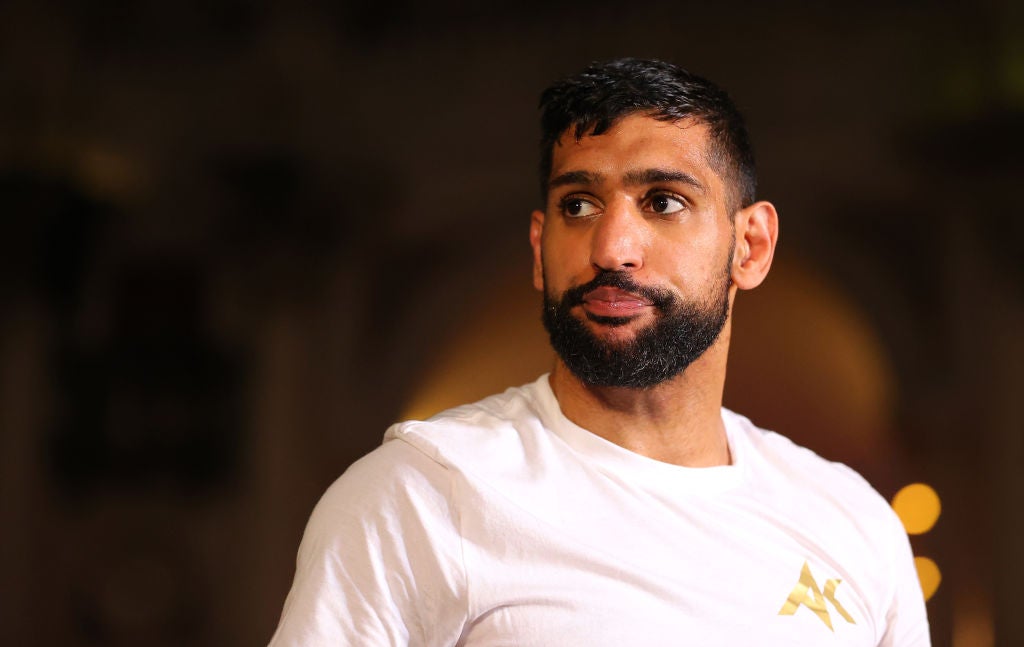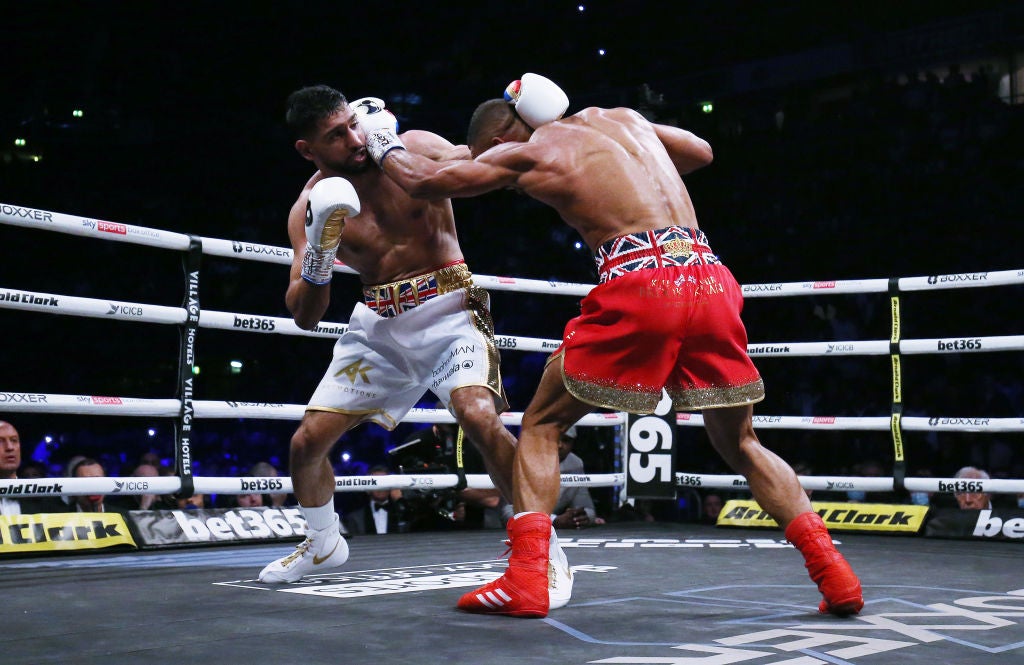Amir Khan overcame the worst types of adversity to represent the best of British boxing
The Olympic silver medallist called time on his career after one final fight against the biggest rival of his time in the sport

Your support helps us to tell the story
From reproductive rights to climate change to Big Tech, The Independent is on the ground when the story is developing. Whether it's investigating the financials of Elon Musk's pro-Trump PAC or producing our latest documentary, 'The A Word', which shines a light on the American women fighting for reproductive rights, we know how important it is to parse out the facts from the messaging.
At such a critical moment in US history, we need reporters on the ground. Your donation allows us to keep sending journalists to speak to both sides of the story.
The Independent is trusted by Americans across the entire political spectrum. And unlike many other quality news outlets, we choose not to lock Americans out of our reporting and analysis with paywalls. We believe quality journalism should be available to everyone, paid for by those who can afford it.
Your support makes all the difference.No other young professional boxer in Britain has ever been under the same relentless scrutiny as Amir Khan.
After 17 years as a professional boxer, world titles, drama, heartache, thrills, risks, sold-out arenas and 40 fights, Khan has officially retired from the sport.
He is still only 35 – still smiling, still healthy and wealthy.
In 2004, at the Olympic Games in Athens, Khan was just 17, but looked about 12, when he was Britain’s only boxing representative. He was a wide-eyed kid with a dream that nobody in the rugged business believed. At that time, Britain had only had one Olympic finalist in 36 years.
Khan won four fights against the odds to reach the final. The reigning champion was Mario Kindelan, the regal and brilliant Cuban, and he was in the other corner in the 2004 lightweight final. Khan lost, but he chased Kindelan all over the ring. A star, a hero, a pioneer was born on that Sunday afternoon.
A few months later, in Bolton, and live on ITV, Khan beat Kindelan in a rematch – he turned professional that night. Khan was still only 18 at the time and the spotlight was on him – that beam has never diminished. Not once in 17 years as a pro has Khan been allowed to lead a normal life on either side of the ring’s ropes. Khan has dealt with the critics, the racists, the fools and all the glory and wealth with equal patience and style. The truth is that boxing took away his childhood, and his life in the ring became the Khan Show.
He won a world title at just 22 and attracted the attention of a global audience. He fought with his heart, often forgetting his boxing brain, and was in great and memorable fights. He could be hurt, dropped, wobbled, but he had so much desire in the ring that he would still fight back. He won wars, he entertained. His speed in the early years was blistering, and again and again he would silence his doubters and critics with great wins. His fights were events.
I have never known a fighter to have to overcome so much criticism and, it has to be said, much of the hate and bias had a racist edge.
Khan just ignored it, founded a gym, funded people in need all over the planet and was forever in demand. From Bolton to Dubai, from Lahore to Brick Lane and from Hollywood to the Garden, everybody had a Khan tale to tell. The kid was a star, make no mistake.
He had wars with great fighters, boxed like a dream in other fights, was treated badly by judges in some fights, lost when he was winning and won when he was losing. In defeat and victory, as the old poem goes, he treated his opponents and his fans equally. He might be cut, bruised and hurt, but he would still meet the press, take all the awkward questions and smile after losses. In victory, he would praise the man he had beaten. He was, in the truest sense of the word, an old-fashioned boxing gentleman. Our ’enry, Sir Henry Cooper, would have been proud of him.
And still the scrutiny remained. He was hounded at times for his private life. The envy was often disgraceful from social media platforms – places that make legitimate the evils of jealousy and hypocrisy. Khan was a legend against the wall of hate and he was totally fearless in the ring.
He was not officially the main event when he made his debut, in his hometown of Bolton, in the summer of 2005, but the truth is that he was the main attraction in each and every single one of his 40 fights. He won 34 times and lost six fights in venues all over the world. He fought at the O2, the Garden in New York, the MGM, the Mandalay Bay, the T-Mobile, the MEN, the Barclays Centre, and dozens of other venues.

He had massive world title fights under the neon lights that remain vivid: the masterclass against Andriy Kotelnik in 2009, his war with Marcos Maidana in 2010, his bold and brutal meeting with Saul Canelo Alvarez in 2016 in Las Vegas. He dared, he took risks and he left every single ounce of pride and desire in the ring.
In February of this year, he fought for the last time when he met his old rival Kell Brook at the Manchester Arena; Khan won his first world title fight there in 2009.
The Brook fight sold out in six minutes and on the night just under 20,000 watched the end of Khan. Brook won in six rounds, Khan took defeat like a hero. Cut, bruised and broken, he praised Brook. That was it, he knew that night, but it took a few weeks to make the decision. It is, by the way, the right decision.
It was a privilege and a pleasure to cover Amir Khan from when he was a skinny kid fighting at the Bury gym, to the mighty Olympics and then all over the world. He was a great professional and an even better human. And friend.
Join our commenting forum
Join thought-provoking conversations, follow other Independent readers and see their replies
Comments